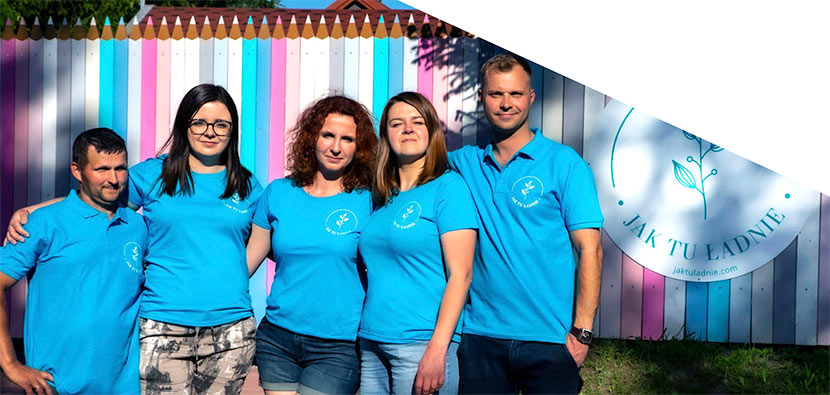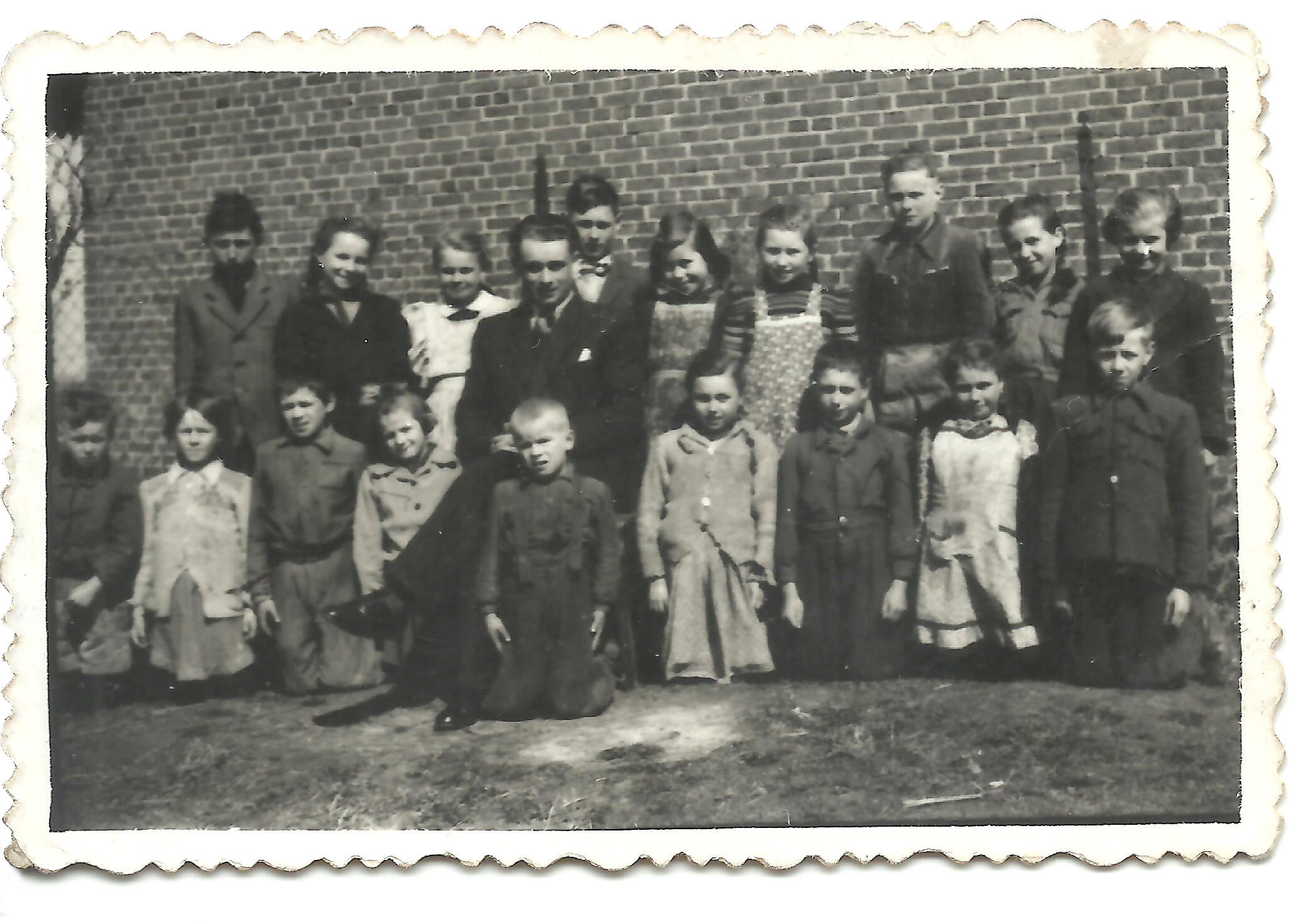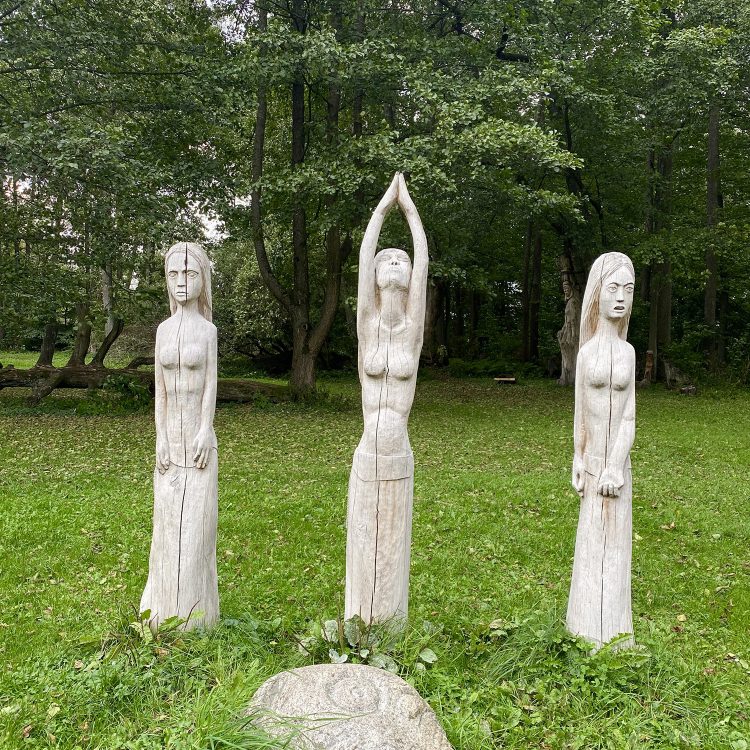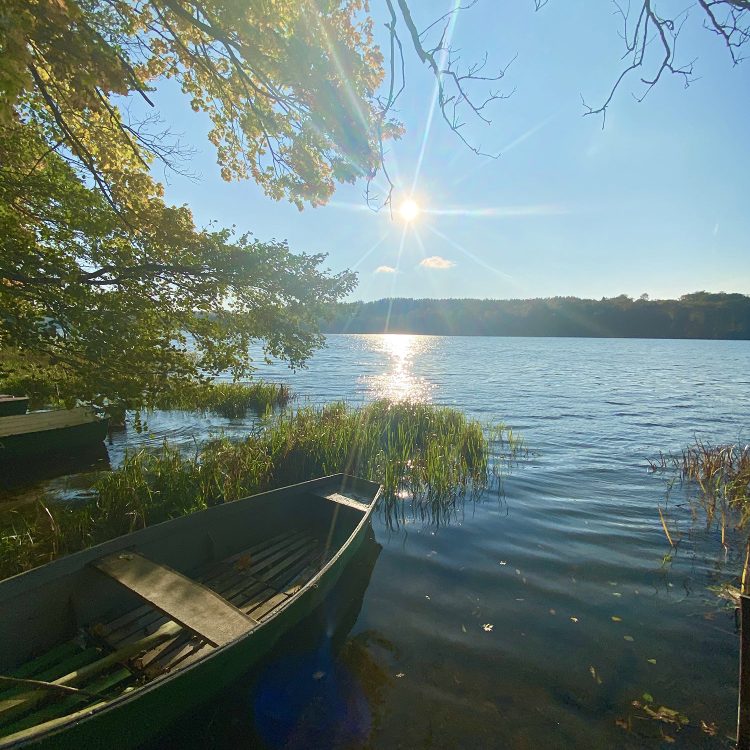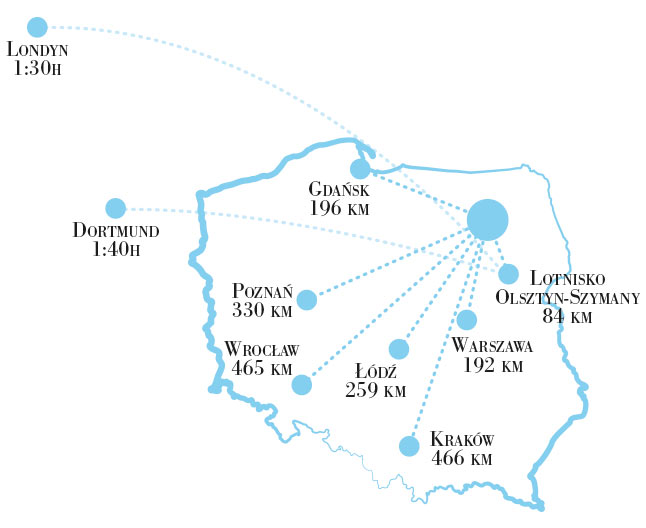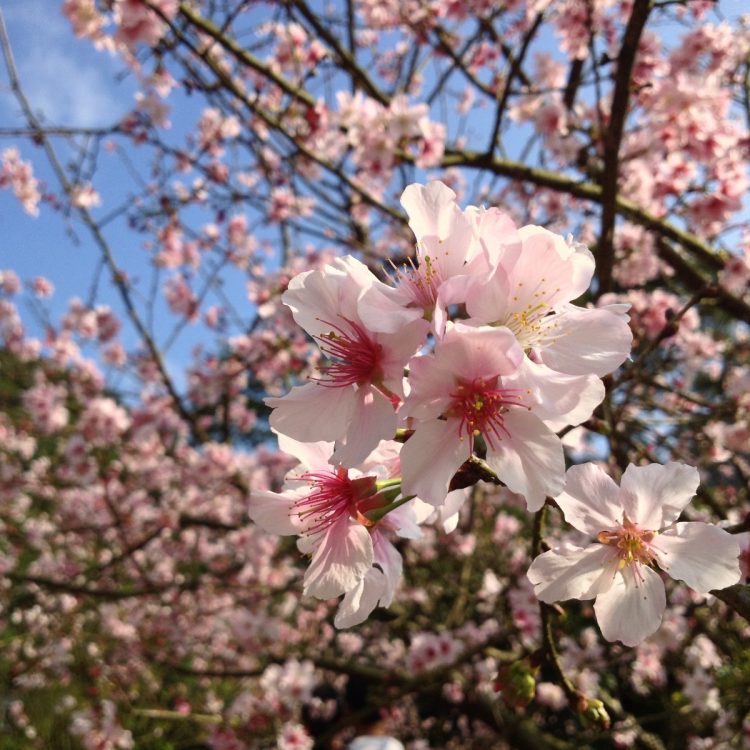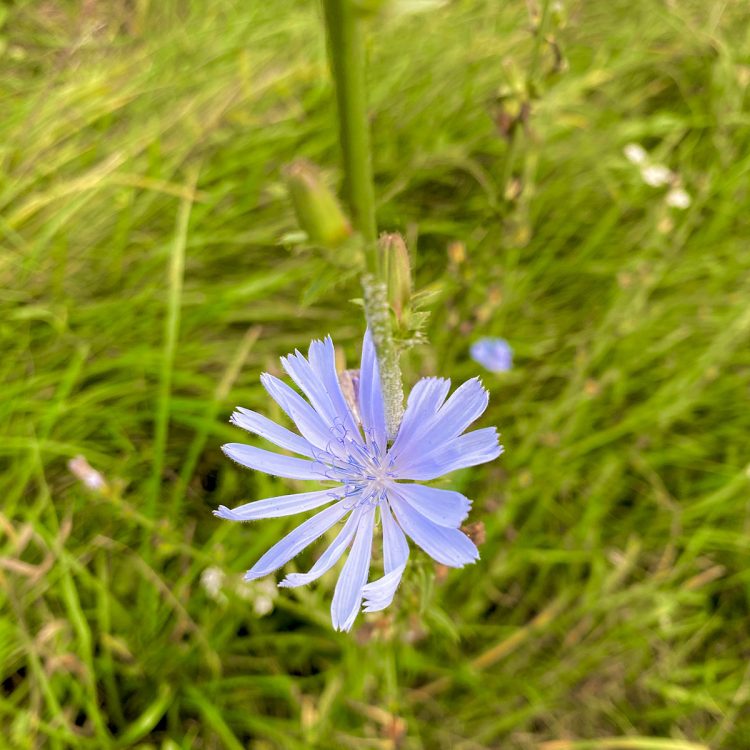Jak Tu Ładnie is a new and not new place, with its own history and a history embedded in the realities of the Prussian-Polish past.
This place is located in a small Masurian village on the shores of Lake Jagodne, called Górkło. The village existed before the Thirteen Years’ War (1454-1466), but the exact date of its foundation is unknown because the first location document was lost. However, we know that around 1760 a school was established in the village.
And this is where our Masurian history begins…
When we stood next to the former Prussian school for the first time, in a place where there had been a school playground many years ago, we said with delight: It’s so nice. Then the idea was born to make this place filled with laughter and joy again.
We looked for houses that would fit the atmosphere of this place for a long time, but we did it! Today, lovers of Masurian lakes, keen cyclists, tourists in love with walks, parents who want to show their children the beauty of nature and everyone who loves the Masurian wind will find relaxation and rest here. Here in Masuria you can find your place on earth. The greatest advantage is nature, the forgotten smell of the countryside, the rhythm of life determined by sunrises and sunsets. Here you can feel as if time stopped.
Paths running through the forest, numerous lakes, old roadside chapels and forgotten villages with the remains of old manor houses – all this creates an unforgettable landscape of Masuria.
Today’s Masuria, before it became Masuria, was for centuries Galindia inhabited by the Galindian tribe.
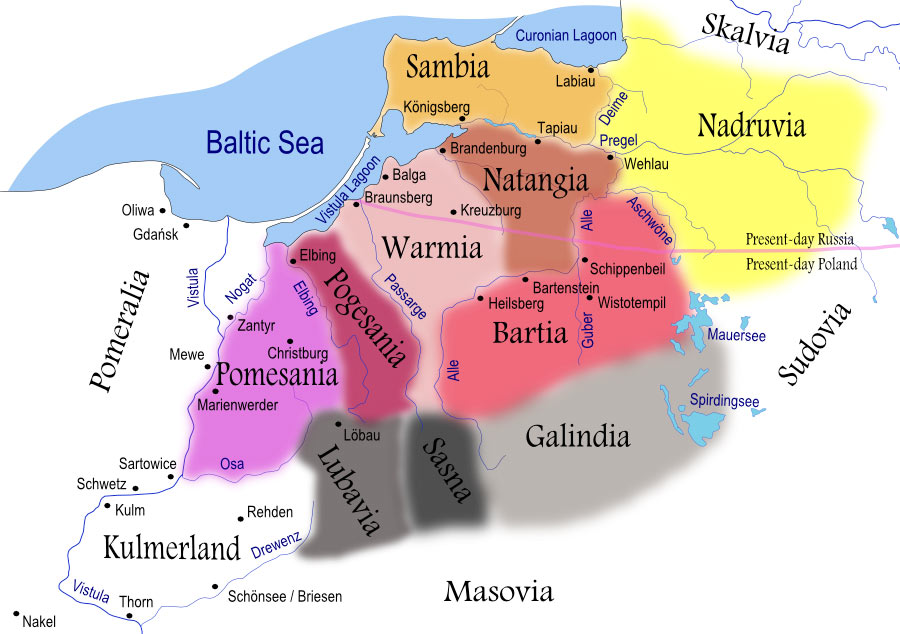
Already in the 2nd century AD the geographer Ptolemy mentions these lands.
Galindia takes its name from the word galas, meaning “the country at the end of the world”. Galindia was one of the 9 lands inhabited by the Prussian population. According to the legend described by the Teutonic chronicler Peter of Dusburg, the Galindians died because they didn’t follow the advice of the Goddess Curche/Kurko/Gurcho * (the name cannot be reproduced due to linguistic issues) and went into battle without weapons, thinking that the Goddess would protect them and they would win.
Let’s start with the fact that in Galindia, which was unusual for those times, there was a matriarchy, which is confirmed by archaeological discoveries, because they were discovered from the 5th to 7th centuries AD. women’s graves in Galindia contained more diverse and richer equipment than the traditional, poor men’s graves.
Who was this Goddess?…
The Galindians worshiped deities associated with the forces of nature and heavenly bodies, as well as sacred groves, fields and waters. One of them was the Goddess Gurko, called the Goddess of creation and fertility. In the Dzierzgoń system in 1249 she is mentioned as a deity of food and drink “to whom rye, wheat, flour, milk and honey were offered.” From the same document we also learn that the Prussians, after harvesting the grain, used to worship this Goddess as God. The custom of making offerings to Goddess Gurko took place once a year and probably took place after the harvest. The economy of the early medieval Galindians was based on agriculture. Three species of wheat were cultivated: barley, oats and millet. Breeding pigs, goats, sheep and horses also played an important role.
The second record indicates the existence of designated permanent places of Gurko worship, as evidenced by the local and topographic names in Galindia derived from the location near these places of worship. In Masuria, there are places whose names come from the name of the Goddess or from her tree – Lipa, including: Kurki, Kurkowo, Święta Lipka, Lipowo and Nasza Górkło.
The fact of the existence of these names related to the cult of Gurko, as well as other data proving the role of women in Galindia, confirms the thesis that this cult was the main cult of Galindia, and Gurko is referred to as the “Mother of the Gods”.
* M. Murinius, Chronicle of the Prussian Masters, ed. Z. Nowak, Olsztyn 1989, p. 14, „Gurcho bóg ich szósty, z ich mniemania nad źywiołami, zbożem i ludzkimi pokarmy miał moc”
Masuria. We know little about this beautiful land, but what Masuria is today is the result of what it has experienced over the centuries. It is worth getting to know the historical places of Masuria. The Masurian land, passing from hand to hand, witnessed the division of families, wars and robberies.
Historians claim that Masuria are Slavs who came from Masovia. The word “Mazur” was created from the syllable of the root maz- from the word “Mazowsze” and adding -ur at the end, which in Polish means “origin from something. Therefore, Masuria are the inhabitants of Masovia. Mazur originally meant “man living in the mud”, and Masovia was called “the muddy country”. When Galindia was conquered by the Teutonic Knights, it was the Masuria who colonized the depopulated areas. After World War II, the people of Masovia were finally stopped being called Masuria and from then on the name was used only to refer to the descendants of Masuria, later called Prussian Masuria.
Referring to distant history, there is no information at all about confrontations between the Galindians and the Piast state until the end of the 10th century. Peaceful relations were probably the result of having a common enemy – the Mazovians. Over time, however, regular armed conflicts began to appear with the Piasts, for whom the agricultural areas of Galindia were very attractive, but this led to the ruination of their economy, which made them susceptible to attacks by the neighboring Yotvingians. The Danish crusade of Valdemar II was also important. At the beginning of the 13th century, the Galindians were no longer a significant force in the region, especially one that could resist the Teutonic Order, which created their own state here with its headquarters in Malbork. From the second half of the 15th century, the Teutonic state was gradually subordinated to the Kingdom of Poland, and in 1525, after losing wars, the Grand Master of the Order, Albrecht Hohenzollern, paid tribute to the King of Poland, Sigismund I the Old – then the religious Teutonic Order ceased to exist and the secular Duchy of Prussia was established, commonly known as Ducal Prussia. They were a Polish fief until 1656, a Swedish fief for a year, and in 1657 Prussia gained independence from the Polish-Lithuanian Commonwealth. In 1701, the Duchy of Prussia together with Brandenburg created the Kingdom of Prussia, which in 1772, together with Warmia, transformed into East Prussia, which was a province of the Kingdom of Prussia, and then of Germany, united in the 19th century.
This is how Masuria found themselves in the orbit of great German policy, which initially respected ethnic communities within its borders, but in the 19th century it became clear that all non-German traces from German territories should disappear. The enemy began to be primarily language.
In 1920, a plebiscite was held to decide whether the areas of Warmia and Mazury would be incorporated into Poland or remain within the borders of the German Reich. The argument for incorporation into Poland was the fact that, according to According to Polish sources, 80% of the population spoke the Masurian dialect in their everyday life, which is a derivative of the Polish language (according to German sources, only 10% of the population spoke Masurian on a daily basis). Ultimately, almost 100% of eligible Masuria, Warmia and Powiśle people decided to belong to the Reich, Poland was granted only 8 communes. The National Socialists quickly completed their Germanization policy – there were not even any Polish-sounding place names left.
The area of East Prussia, especially Masuria, where Hitler found so much support, full of forests and lakes, conveniently located near the border with the USSR, was ideal for the concentration of Wehrmacht troops during World War II. It was no coincidence that Hitler’s headquarters was located among the Masurian forests in Gierłoż, which he called the “Wolf’s Lair” after his nickname “wolf”.
When in January 1945 the Red Army entered the territory of former East Prussia, it treated Masuria and Warmia people as Germans. They paid for it very painfully, experiencing robberies, rapes and murders. Many went to Germany, but most had huge assimilation problems. Those who remained suffered harassment from the Poles because they were treated in Masuria as Germans.
Today, Masuria is mostly inhabited by descendants of Polish settlers who came to this region after World War II from what is now Ukraine, or who moved from other regions of Poland after World War II.


